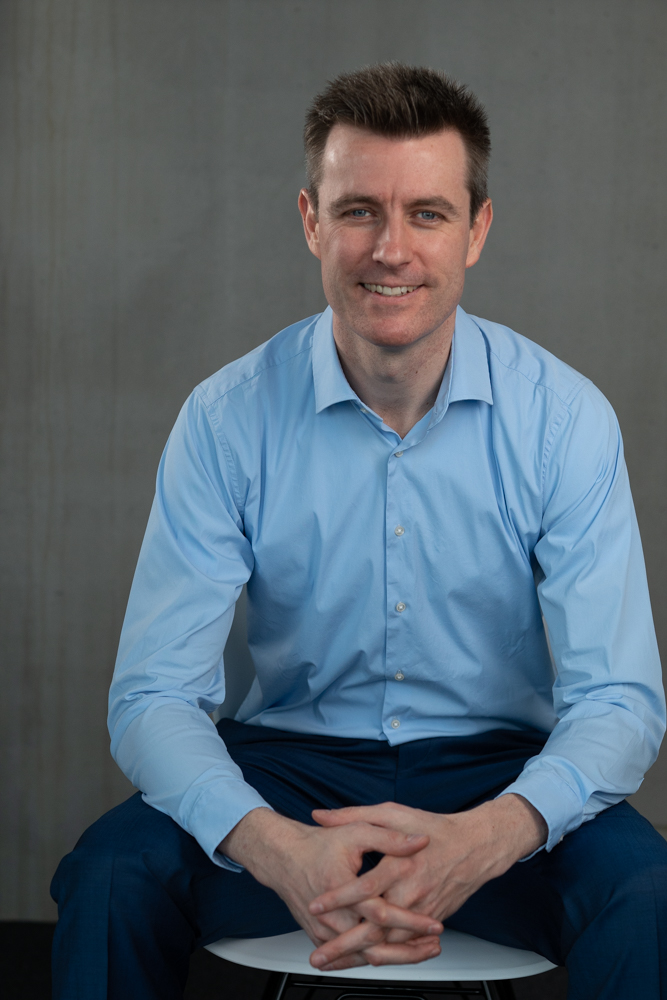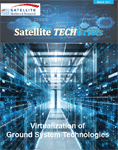Frederik Simoens Chief Technology Officer-ST Engineering iDirect
Brussels, Belgium, March 8, 2023--ST Engineering iDirect has been in the forefront of the key innovations in the ground segment. One of the company's major thrusts is in the field of virtualiztion of ground services. To shed light on this is ST Engineerring iDirect's Chief Technology Officer Frederik Simoens. Excerpts of an interview with Simoens follows:
Can you explain why we find ourselves working towards the virtualization of the ground segment?
The virtualization of the ground segment is happening for three main reasons:
1. A response to the evolutions that are happening in the space segment. As we all know, we’re moving into a multi-orbit world and satellites are becoming much more flexible and dynamic. However, you can only realize the full potential of that New Space capability if you have the right ground capabilities that are in lock step. For that reason, we really need to evolve into a fully flexible and dynamic ground segment and that leads us into the second point,
2. The ability of the ground segment to digitize (that is all parts of ground infrastructure from the modems to the ODUs and the antennas) so that it can leverage the full capabilities of the cloud. Virtualization will enable the satellite ground segment to be completely flexible enabling that the ability to scale up and down, just like the satellites, with the capability to move bandwidth around as and when required.
3. The last element is related to telco and IT Convergence. We come from a long history of proprietary technologies, network stacks and NMS that made up our satellite communication systems. Today, we’re moving to a much more standardized way of operating, leveraging proven Telco standards for true interoperability. Standalone systems will no longer make sense. Instead, a satcoms system needs to be managed along with other types if networks, such as terrestrial and cellular, and they will combine to create one seamless ecosystem so that operators can develop hybrid service offerings to deliver user access to the connectivity medium that makes most sense for them.
 |
| Frederik Simoens |
How will this be achieved?
This is a complex question and it’s a process that won’t happen overnight.
Standardization will be a pivotal part of the process. The DIFI (Digital Intermediate Frequency Interoperability) consortium made good progress in 2022 and released an updated version of its interoperability standard in August, labeled IEEE-ISTO Std 4900-2021: Digital IF Interoperability 1.1 Standard. This improved the maturity of the specification and was part of the group’s goals for 2022 after it released version 1.0 last year.
Organizations such as DIFI are crucial in terms of coordinating different industry segments that must work together to implement the standard. These include cloud providers, satellite ground platform manufacturers, teleport operators, antenna manufacturers, ground segment ODU manufacturers (antenna, BUC/ amplifiers and frequency converter manufacturers). By working with standards bodies, satellite ensures that it will no longer be a niche connectivity technology.
If we only virtualize the modem side, then the antennas or amplifiers won’t be able to speak the digital language, and this will mean that we cannot create a fully digital teleport. The satcoms industry must continue to work to standardize interfaces and increase their adoption.
In addition, the integration of satellite networks with terrestrial networks, for instance, requires interoperability at the management and orchestration layer. Here, the standardization work being done within 3GPP-NTN looks very promising. Another area is space/ground convergence, which requires tighter interaction between the satellite and ground assets. Again, standardization on how these different components should interface is currently being examined.
What is ST Engineering iDirect specifically doing to virtualize its technology?
in September, together with Microsoft Azure, we successfully demonstrated an important milestone: the ability of a virtual modem to extract information from a high-speed satellite connectivity link. Our demonstration showcased a virtualized SCPC modem receiving satellite signals digitally via an ethernet cable. Signals from satellites today are traditionally connected to physical modems via analog cables that are not directly compatible with cloud-based networks. This demonstration showed that, in the future, it’s possible for virtual modems to run on third-party cloud infrastructure replacing the need for a physical on-premise satellite modem. It’s proof that future satellite connectivity can be established from a cloud environment through the digital interface directly to the antennas.
What benefits will virtualization bring to ST Engineering iDirect’s customers?
Virtualization has the potential to transform our customers’ and their customers’ businesses. The virtualization of our modems will not only enable our customers to deploy it faster as well as offering more flexibility and increased services over time – this extends the life of the modem letting our customer realize a faster ROI. It’s a win-win for our customers.
Virtualization is the first step for us, and our customer base is very familiar with the concept. It lowers costs and brings predictability, reliability and resilience. It allows you to put your digital processing and other elements in the cloud. The first two steps for us are to focus on proving that we can run our network management system (NMS) in the cloud and to virtualize our modem. The hub-side technology will come next.
This will allow our customers to design their networks in the most cost-effective way possible, building what this need today but knowing they can quickly adapt and expand as demand increases or requirements change.
 |
| To read or download a pdf of a MarketBrief report on Virtualization of Ground Systems Technologies sponsored by ST Engineering iDirect click here. |
This is a complex process. How long will this take?
Yes, this will not happen overnight. There are many things that need to happen in the meantime. We will move the racks of servers running already virtualized processes within a smaller private cloud network to the public cloud – this will include network management systems. Then, we will migrate modulators and demodulators that run on dedicated hardware, which is quite challenging. Simultaneously, we will also need to work on how they interface with other ground segment components such as antennas, amplifiers and frequency converters and this is where standardization comes in. While there is still some time to go, we are looking forward to making this a reality so that our customers can ultimately benefit from the huge flexibility, security, reliability and cost-effectiveness of the cloud.





